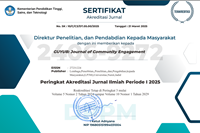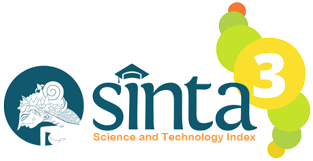PKM Mengurangi Limbah Kain Perca melalui Pelatihan Tapestry dan Patchwork di UMKM Rumah Karya Disabilitas Pelangi Kasih Kabupaten Lumajang
Authors (s)
(1) Hany Mustikasari (Universitas Surabaya)
Indonesia
(2) * Siti Zahro
 (Universitas Surabaya)
(Universitas Surabaya) Indonesia
(3) Faizal Susilo Hadi (Universitas Surabaya)
Indonesia
(*) Corresponding Author
AbstractSLB Kristen Pelangi Kasih has a garment business that produces various kinds of products such as bed sheets, bed covers, tote bags and souvenirs. However, they cannot process the patchwork waste they produce. The purpose of this community service (CS) is to provide assistance in managing patchwork waste into products that are ready for sale so as to provide additional income. Furthermore, the ABCD method is used by CS team to solve the problems being faced: discovery, dream, design, define, and destiny. The final stage is an evaluation of all the activities that have been carried out. The results showed that a joint agreement to solve the problems being faced was carried out at the planning stage by looking at the potential possessed by SLB Kristen Pelangi Kasih. The trainings designed, determined, and carried out together had a real impact on the students' work that was sold. In addition, the teachers and staff involved have also begun to reorganize their business management and have begun to explore the market place to market them. Finally, all parties hope that this impact will take place in a sustainable manner to achieve the goals that are expected together.
|
Keywords
ABCD; special education; patchwork waste
Full Text: PDF
Refbacks
- There are currently no refbacks.
Copyright (c) 2023 Hany Mustikasari, Siti Zahro, Faizal Susilo Hadi

This work is licensed under a Creative Commons Attribution-ShareAlike 4.0 International License.
This journal is licensed under

Creative Commons Attribution-ShareAlike 4.0 International License.








.png)
